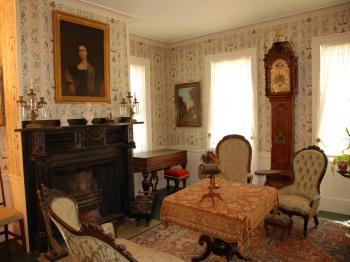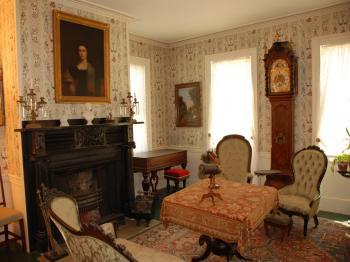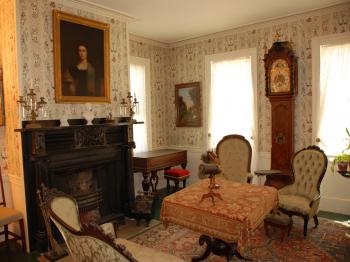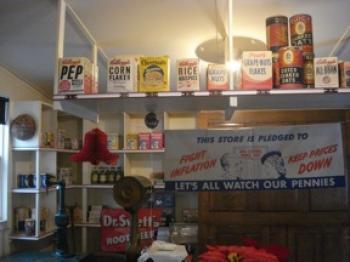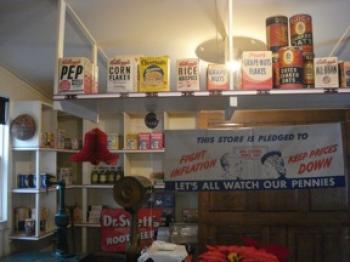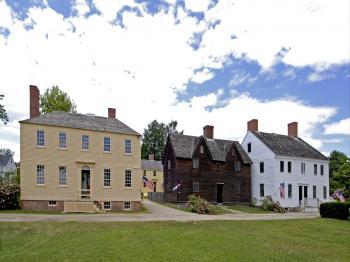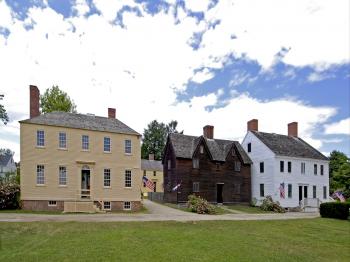In search of a slice of American history over the holiday season, I traveled to the eastern shores of New Hampshire, landing in the quaint locale of Portsmouth.
Narrow roads wind through downtown, taking you past neatly restored homes and buildings in what was once one of the most developed and important seaports in the new colonies. Driving through the historical part of town, you can’t help but feel you have traveled back in time, passing tightly clustered small homes whose front doors open up nearly onto the narrow streets.
In a quiet corner of Portsmouth I encountered Strawbery Banke, a living history museum of about 40 buildings that have been, or are in the process of, being restored. It is a preservation of urban history of four centuries of inhabitants of Strawbery Banke along the Piscataqua Riverfront.
Through the museum tour I learned that, sadly, under the Portsmouth urban renewal plan in the 1950s to the 70s, over 200 historic houses were razed. The densely-packed alleyways and crowded houses of the old Strawberry Banke are gone. However, over 42 historic buildings from the 16th to 19th century remain and are meticulously restored and preserved in the museum.
A tour guide walked us through a few of the buildings, detailing their history and occupants. The buildings came to life through the creaking floors and decorated hallways. Most of the furnishings were the originals of the households. Those that weren’t originals were good representations of what could be found in the houses during the various time periods.
Narrow roads wind through downtown, taking you past neatly restored homes and buildings in what was once one of the most developed and important seaports in the new colonies. Driving through the historical part of town, you can’t help but feel you have traveled back in time, passing tightly clustered small homes whose front doors open up nearly onto the narrow streets.
In a quiet corner of Portsmouth I encountered Strawbery Banke, a living history museum of about 40 buildings that have been, or are in the process of, being restored. It is a preservation of urban history of four centuries of inhabitants of Strawbery Banke along the Piscataqua Riverfront.
Through the museum tour I learned that, sadly, under the Portsmouth urban renewal plan in the 1950s to the 70s, over 200 historic houses were razed. The densely-packed alleyways and crowded houses of the old Strawberry Banke are gone. However, over 42 historic buildings from the 16th to 19th century remain and are meticulously restored and preserved in the museum.
A tour guide walked us through a few of the buildings, detailing their history and occupants. The buildings came to life through the creaking floors and decorated hallways. Most of the furnishings were the originals of the households. Those that weren’t originals were good representations of what could be found in the houses during the various time periods.
In the kitchens, jars of preserved fruits and vegetables lined shelves and dried herbs hung from the ceilings. The kitchens in the homes of the 16th through 18th centuries had open hearth fireplaces on which all the family meals were cooked.
In the last house on the tour, Joe Capobianco, a historian and volunteer at Strawbery Banke museum, demonstrated how average meals were prepared back then. Participants of the tour were seated on rough benches in front of a broad table where Joe demonstrated the utensils, their use, and the few ingredients that individuals had to work with. Rich aromas from the fireplace filled the room as he stirred and poured corn meal onto a cast-iron griddle laid over red hot coals in the hearth.
As Capobianco prepared griddle cakes, he expounded on what life would have been like for the colonists in Strawbery Banke. He said families usually had six to eight children. Due to disease, about half would not survive to the age of five. I was amazed at what went into providing enough food year-round. Simple daily meals took an astounding amount of work to prepare compared to today’s standards and offered one the greatest challenges to survival.
In the last house on the tour, Joe Capobianco, a historian and volunteer at Strawbery Banke museum, demonstrated how average meals were prepared back then. Participants of the tour were seated on rough benches in front of a broad table where Joe demonstrated the utensils, their use, and the few ingredients that individuals had to work with. Rich aromas from the fireplace filled the room as he stirred and poured corn meal onto a cast-iron griddle laid over red hot coals in the hearth.
As Capobianco prepared griddle cakes, he expounded on what life would have been like for the colonists in Strawbery Banke. He said families usually had six to eight children. Due to disease, about half would not survive to the age of five. I was amazed at what went into providing enough food year-round. Simple daily meals took an astounding amount of work to prepare compared to today’s standards and offered one the greatest challenges to survival.
Capobianco passed around salted fish, a staple in a seaport community, a cone of raw sugar (a rare commodity) and a linen napkin which in those times would have cost the owner dearly. Life was laborious but simple. Though life was difficult, it was often quiet and calm.
In the guest rooms, a fireplace, stools, and chairs rested against the walls. The middle of the room was left open. If the family was wealthy enough, there would be a piano. Most of the entertainment consisted of enjoying each other’s company through games, dancing and music, or a feast.
Many stately mansions, such as the Goodwin mansion built in 1811, reflected the wealth of Portsmouth as a major seaport. The front portico of the Goodwin mansion is from the Greek revival movement and leads to a Victorian interior. Outside, the tour guide pointed out historic gardens where herbs and ornamental plants are faithfully reproduced to exhibit what they would have looked like in the day. But, since the ground was covered in snow, one could only imagine what they looked like.
The tour included a small grocery store at the corner of one of the streets. Inside, brands and foods popular during the 1940s were displayed on the shelves. Most of them seemed familiar. A candy bar cost 5 cents, three cans of soup cost 25 cents. Next to the prices were numbers which the tour guide explained were the amount of ration tickets needed to purchase the item during World War II.
The aesthetics and designs of the products drew me in for a close look. Many of the cans were simple; few if any designs showed a picture of the product inside. The model on a box of baking soda looked poised and elegant. Oddly enough, the baby on the Gerber baby food jar hadn’t changed at all. “That is one old baby,” the tour guide remarked.
The sense of the progression of history throughout the museum was uncanny. The buildings were beautiful and the tour guides’ knowledge and their enthusiasm took me on a trip back in time, a trip well worth taking.
In the guest rooms, a fireplace, stools, and chairs rested against the walls. The middle of the room was left open. If the family was wealthy enough, there would be a piano. Most of the entertainment consisted of enjoying each other’s company through games, dancing and music, or a feast.
Many stately mansions, such as the Goodwin mansion built in 1811, reflected the wealth of Portsmouth as a major seaport. The front portico of the Goodwin mansion is from the Greek revival movement and leads to a Victorian interior. Outside, the tour guide pointed out historic gardens where herbs and ornamental plants are faithfully reproduced to exhibit what they would have looked like in the day. But, since the ground was covered in snow, one could only imagine what they looked like.
The tour included a small grocery store at the corner of one of the streets. Inside, brands and foods popular during the 1940s were displayed on the shelves. Most of them seemed familiar. A candy bar cost 5 cents, three cans of soup cost 25 cents. Next to the prices were numbers which the tour guide explained were the amount of ration tickets needed to purchase the item during World War II.
The aesthetics and designs of the products drew me in for a close look. Many of the cans were simple; few if any designs showed a picture of the product inside. The model on a box of baking soda looked poised and elegant. Oddly enough, the baby on the Gerber baby food jar hadn’t changed at all. “That is one old baby,” the tour guide remarked.
The sense of the progression of history throughout the museum was uncanny. The buildings were beautiful and the tour guides’ knowledge and their enthusiasm took me on a trip back in time, a trip well worth taking.

